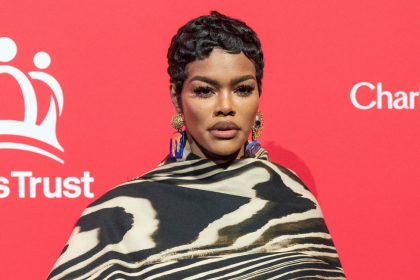Twitch streamer Kai Cenat encountered an unexpected challenge during his live coverage of the 2025 American Music Awards when an individual attempted to use his broadcast platform to express support for controversial rapper Kanye West. The incident highlighted the complex dynamics that content creators face when managing live streaming environments while maintaining editorial control over their content.
The confrontation demonstrated how streaming platforms create unpredictable situations where content creators must make real-time decisions about what messages they allow to be broadcast through their channels. Cenat’s response revealed strategic thinking about brand protection and audience management during high-visibility live events.
Unexpected interruption disrupts planned broadcast content
During Cenat’s AMAs coverage, a man accompanying a young girl attempted to redirect the conversation toward praising Kanye West’s controversial public statements. The individual expressed admiration for the rapper’s willingness to make provocative comments, framing his support in terms of free speech principles and American values.
The interruption occurred while Cenat was engaged in planned content creation with his audience, demonstrating how live streaming environments can be compromised by individuals seeking to inject their own messages into established broadcasts. The timing of the interruption suggested deliberate intent to leverage Cenat’s platform reach for personal advocacy.
The presence of a child during the confrontation added complexity to the situation, as Cenat needed to manage his response appropriately while maintaining professional boundaries. This dynamic illustrates challenges that content creators face when managing interactions involving minors during live broadcasts.
Streamer demonstrates platform control and boundary enforcement
Cenat’s immediate recognition of the interruption as an attempt to exploit his influence showed sophisticated understanding of how his platform could be manipulated by others seeking to amplify their messages. His response questioned the individual’s motivations while asserting editorial control over his broadcast content.
The streamer’s decision to prioritize energy protection and positive environment maintenance reflected strategic thinking about long-term audience relationships versus short-term confrontation management. His polite but firm removal of the individuals demonstrated professional boundary-setting techniques.
Cenat’s handling of the situation illustrated how successful content creators must balance accessibility with editorial control, especially during high-profile events where their platforms might attract individuals seeking unauthorized publicity or message amplification opportunities.
Historical context reveals ongoing relationship complications
The confrontation occurred against the backdrop of Cenat’s complicated history with Kanye West, including initial positive interactions followed by public disagreements and professional relationship dissolution. Their relationship began promisingly with a meeting outside the 2025 Grammys where Cenat expressed admiration for West’s dramatic entrance style.
Cenat had initially planned collaborative content with West, suggesting potential mutual benefit from their association. However, their professional relationship deteriorated when West posted antisemitic content that prompted Cenat to distance himself publicly from the rapper and cancel planned streaming collaborations.
The breakdown in their relationship generated public backlash from West, who criticized Cenat and made accusations about idea theft. This history provided important context for understanding why Cenat might be particularly sensitive to unsolicited expressions of support for West during his broadcasts.
Content creator responsibilities involve editorial decision-making
The incident highlighted how streaming platforms place content creators in positions where they must make instant editorial decisions about what messages receive amplification through their channels. Cenat’s response demonstrated awareness of his responsibility for content that appears on his platform, even when contributed by others.
Live streaming environments create unique challenges where traditional media gatekeeping functions must be performed in real-time by individual creators who may lack formal editorial training or institutional support. These responsibilities require quick judgment about controversial topics and appropriate response strategies.
The situation illustrated how content creators must balance free expression principles with practical considerations about brand safety, audience relationships, and platform policies that govern acceptable content standards.
Audience expectations shape streamer behavior choices
Cenat’s protective approach to his streaming environment reflected understanding that his audience expects certain types of content and may react negatively to unexpected political or controversial messaging. His decision prioritized audience satisfaction over accommodation of unsolicited opinions.
Content creators build audiences based on consistent content themes and values, making sudden shifts in messaging potentially disruptive to established viewer relationships. Cenat’s response suggested recognition that maintaining audience trust requires careful curation of broadcast content.
The incident demonstrated how successful streamers must consider long-term audience development alongside immediate content decisions, especially when faced with attempts to inject controversial topics into their programming unexpectedly.
Live streaming creates vulnerability to content disruption
The AMAs incident exemplified inherent vulnerabilities in live streaming formats where content creators cannot preview or edit interactions before they reach audiences. These technical limitations require streamers to develop skills in real-time content management and crisis response.
Unlike traditional media production where content can be reviewed and edited before publication, live streaming demands immediate decision-making about appropriate responses to unexpected situations. This requirement places significant pressure on individual content creators who must serve multiple functions simultaneously.
The unpredictable nature of live content creation means that streamers must prepare for various scenarios while maintaining entertaining and engaging programming that meets audience expectations consistently throughout extended broadcast periods.
Platform influence creates responsibility for message amplification
Cenat’s recognition that his platform influence could be exploited by others seeking message amplification demonstrated sophisticated understanding of social media power dynamics. His response showed awareness that allowing certain messages might imply endorsement or provide unintended promotional value.
Content creators with significant followings face ongoing challenges in managing how their platforms might be used by others seeking to advance personal agendas or controversial viewpoints. These situations require careful navigation between accessibility and editorial control.
The incident illustrated broader questions about platform responsibility and content creator obligations when their channels become vehicles for messages they did not initiate or endorse, requiring clear boundary-setting and response protocols.
Professional development through conflict resolution
Cenat’s handling of the confrontation demonstrated professional growth in managing challenging live broadcasting situations while maintaining composure and clear communication with his audience. His response balanced firmness with politeness, showing diplomatic skills alongside editorial control.
The incident provided learning opportunities for both Cenat and his audience about appropriate boundaries in content creation and the importance of respecting creators’ editorial decisions about their programming. These educational aspects add value beyond immediate entertainment content.
Successful navigation of challenging situations like this confrontation helps content creators build credibility and trust with audiences who appreciate professional handling of difficult circumstances during live broadcasts.
The AMAs incident illustrated ongoing challenges that content creators face in maintaining editorial control while engaging with unpredictable live environments that can be disrupted by individuals seeking to advance personal agendas through established broadcasting platforms.

















